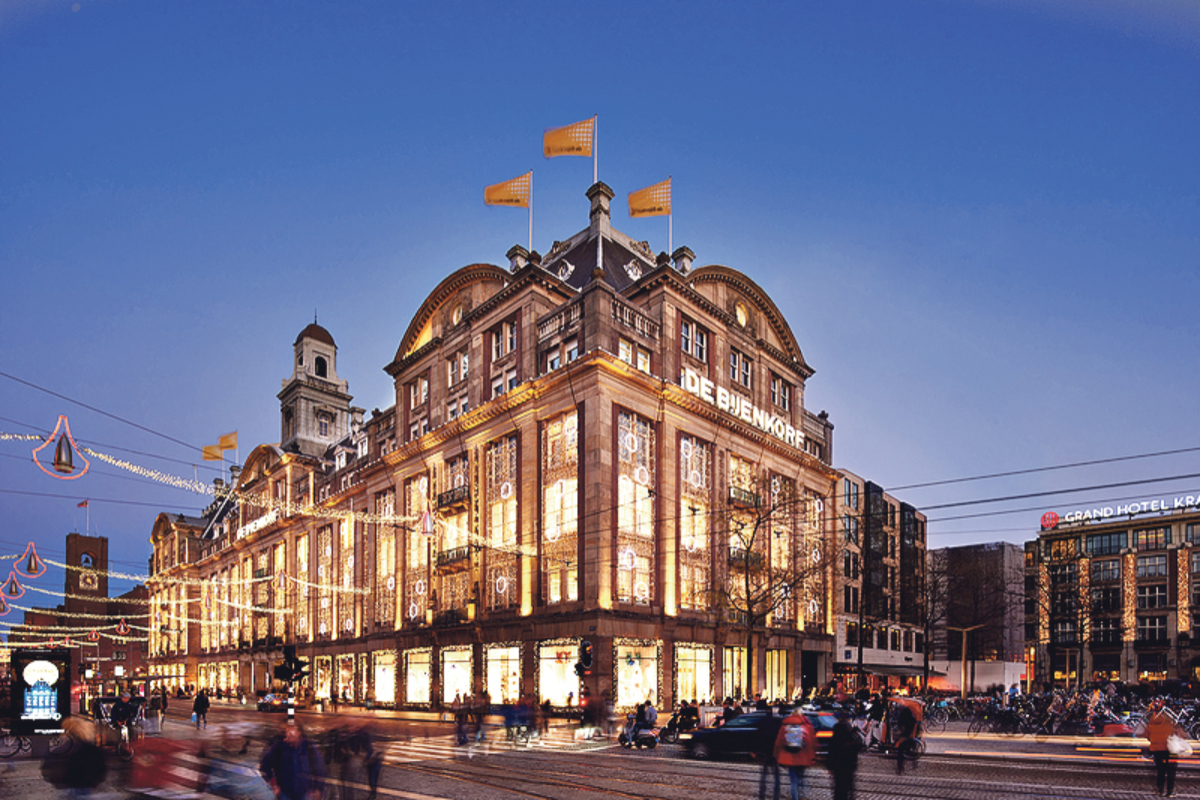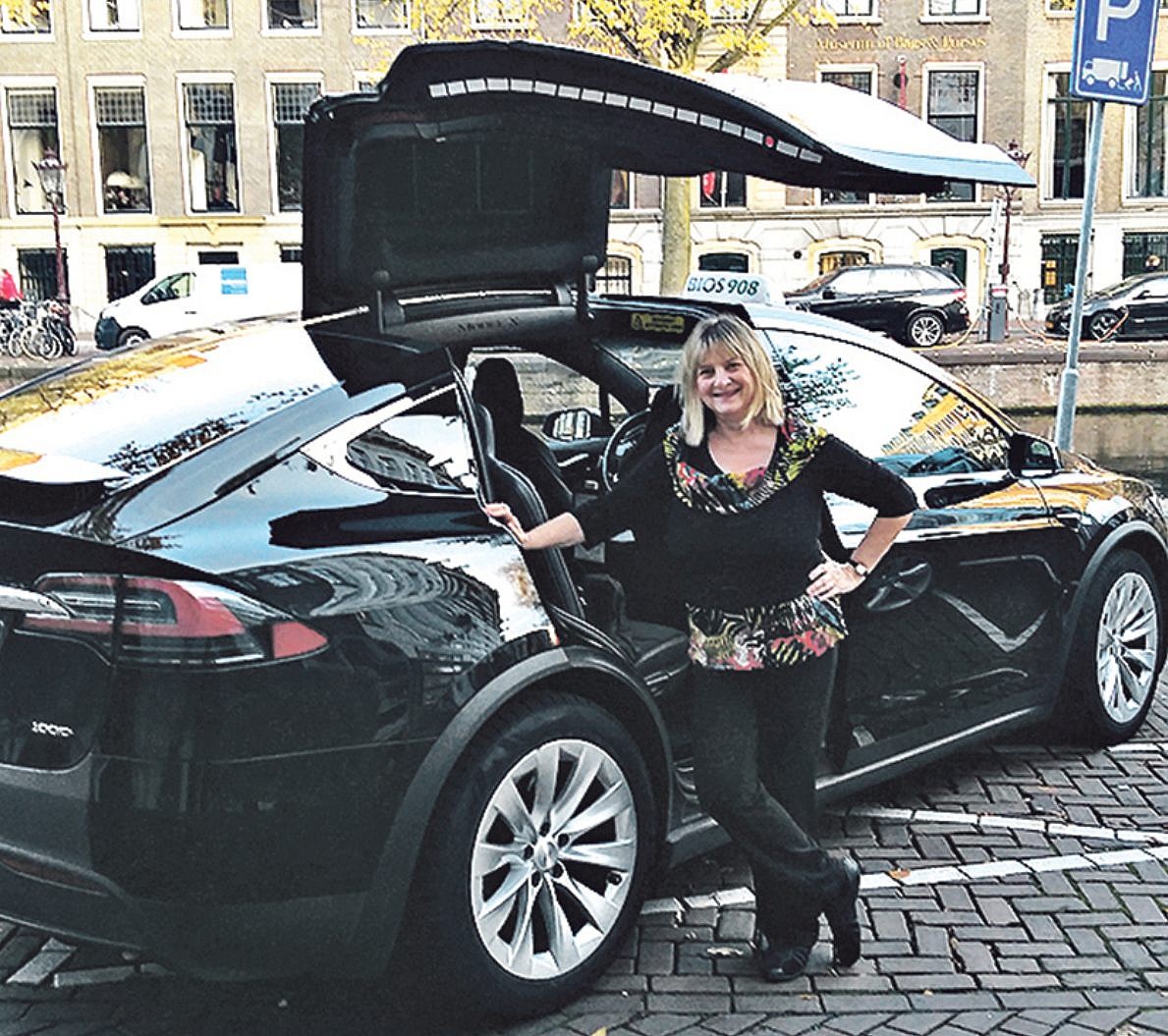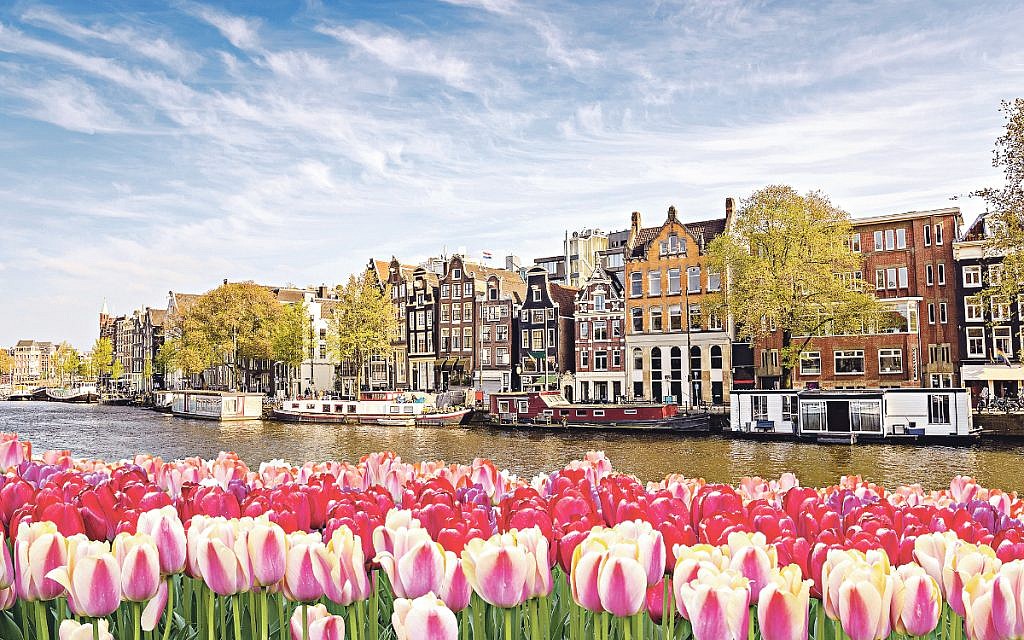So Dutch fun!
We explore the lesser-known Jewish links to Amsterdam, learns about the city’s famous artists and enjoys a real gem of an afternoon tea
Taking just 45 minutes to fly from London, I began questioning why I don’t visit Amsterdam more often.
It has 100km of the most beautiful and most historic canals and an interesting quirkiness, as shown by both its “special” cafés and famous red light districts.
Of course, there’s also an extensive Jewish history here in the capital of the Netherlands, and attracts millions of visitors to both the Anne Frank House and the extensive Jewish Historical Museum, a short distance away.
Get The Jewish News Daily Edition by email and never miss our top stories Free Sign Up
Perhaps less well-known is the stunning Art Deco cinema instigated by Abraham Icek Tuschinski, a Polish immigrant who arrived in Amsterdam at the beginning of the 20th century and decided to get involved in what was then the new film craze.
With the help of his brothers- in-law, he raised four million guilders and opened what is considered to be one of the most beautiful cinemas in the world. The interior is sumptuous with a noticeable Asian influence. Tragically, during the Second World War, Abraham and his entire family were murdered in the concentration camps and the film theatre was renamed Tivoli.
It reverted to its original title in the 1940s and is now part of the Pathé brand, as well as being celebrated as one of the city’s treasures.
Another Jewish influence is the famous and extremely luxurious De Bijenkorf department store on Dam Square, founded in 1870 by Simon Philip Goudsmit.

During the occupation, Nazis were forbidden to shop there owing to
it being a “Jewish enterprise”. It consists of 20,000 square metres and has, for the past eight years, been owned by the family that owns Selfridges.
After touring the departments, I was taken up to the Room on the Roof, a refurbished accommodation in the building’s tower, which as well as offering amazing views over the town, is available to writers, musicians or artists.
The idea is for them to later present their work in the store, in whatever form, be it a poem in the book department, exhibitions in the atrium, or music in the fitting rooms. It’s the most original use of space in a store I’ve ever seen.
The Amsterdam food scene, which has always been exceptionally good, seems to have upped its game since my last visit, especially with the construction of a number of five-star hotels. There are now more than a dozen of Michelin-starred restaurants in locations all over the city.
The Rijksmuseum has its own, The RIJKS* Michelin starred restaurant, where young chefs present innovative dishes in both taste and presentation.
My pear starter with a tasty sauce arrived hanging from a little tree.
The museum itself has reopened after a 10-year closure and is now almost unrecognisable.
What hasn’t changed is the position of Rembrandt’s famous Night Watch. I was intrigued when our guide Margreet told us this was the given name for his work, because it had been covered for many years by a dark varnish.
When it was eventually removed, a picture was revealed of the Militia Company of District II, whose job it was to protect the city – but it was too late, the original name had stuck and so it remains as The Night Watch.
In the next room and painted by Rembrandt many years later is Jewish Bride, a favourite of Van Gogh during his younger years, which tenderly depicts early love: she is modest and shy, and he faithful and protective.
This year marks 350 years since Rembrandt’s death, and there are numerous exhibitions and celebrations not only in Amsterdam, but also in Leiden, his place of birth.
Of course, there is another famous artist of the city. I was invited to a press conference at the Van Gogh museum, where I learnt 1,000 numbered exact replicas of the artist’s four small sketchbooks were soon to be up for sale.

The fading covers and frayed elastic binding makes them so realistic they were quite thrilling to handle. The museum itself is vibrant and attractive, but who could not help feeling a little sad visiting and knowing that Van Gogh, the quintessential Dutch modern painter, only sold one painting during his lifetime?
Many of Amsterdam’s new luxury hotels that have appeared over the past few years have cleverly turned the original, timeless, houses into spectacular spaces to stay. This is especially true at my hotel, the recently opened Waldorf Astoria, which spreads across six of Amsterdam’s grandest 17th century canal mansions, on Herengracht, in the heart of the city, and yet also manages to incorporate a garden for the use of the guests.
I enjoyed a special afternoon tea inspired by the DL Jewellery collection from Debora Huisman-Leeser. Presented as precious stones, rings and earrings in jewellery boxes, everything was spectacular and edible. The food and drink kept on coming, all for the competitive price of €42 (£36).
Over the past decade, Amsterdam has quietly become a luxury destination, mainly centred around its UNESCO World Heritage Canal Ring and this, coupled with its many other attractions, makes it a very desirable place to visit.
Amsterdam
Lucy flew with Royal Dutch Airlines KLM (klm.com) and stayed at the Waldorf Astoria (https://waldorfastoria3.hilton.com) where a King Grand Premier room starts from €667 (£572) per night, for two people sharing. For more tourist information, visit iamsterdam.com

Thank you for helping to make Jewish News the leading source of news and opinion for the UK Jewish community. Today we're asking for your invaluable help to continue putting our community first in everything we do.
For as little as £5 a month you can help sustain the vital work we do in celebrating and standing up for Jewish life in Britain.
Jewish News holds our community together and keeps us connected. Like a synagogue, it’s where people turn to feel part of something bigger. It also proudly shows the rest of Britain the vibrancy and rich culture of modern Jewish life.
You can make a quick and easy one-off or monthly contribution of £5, £10, £20 or any other sum you’re comfortable with.
100% of your donation will help us continue celebrating our community, in all its dynamic diversity...
Engaging
Being a community platform means so much more than producing a newspaper and website. One of our proudest roles is media partnering with our invaluable charities to amplify the outstanding work they do to help us all.
Celebrating
There’s no shortage of oys in the world but Jewish News takes every opportunity to celebrate the joys too, through projects like Night of Heroes, 40 Under 40 and other compelling countdowns that make the community kvell with pride.
Pioneering
In the first collaboration between media outlets from different faiths, Jewish News worked with British Muslim TV and Church Times to produce a list of young activists leading the way on interfaith understanding.
Campaigning
Royal Mail issued a stamp honouring Holocaust hero Sir Nicholas Winton after a Jewish News campaign attracted more than 100,000 backers. Jewish Newsalso produces special editions of the paper highlighting pressing issues including mental health and Holocaust remembrance.
Easy access
In an age when news is readily accessible, Jewish News provides high-quality content free online and offline, removing any financial barriers to connecting people.
Voice of our community to wider society
The Jewish News team regularly appears on TV, radio and on the pages of the national press to comment on stories about the Jewish community. Easy access to the paper on the streets of London also means Jewish News provides an invaluable window into the community for the country at large.
We hope you agree all this is worth preserving.
-
By Brigit Grant
-
By Laurent Vaughan - Senior Associate (Bishop & Sewell Solicitors)
-
By Laurent Vaughan - Senior Associate (Bishop & Sewell Solicitors)
-
By Laurent Vaughan - Senior Associate (Bishop & Sewell Solicitors)
-
By Laurent Vaughan - Senior Associate (Bishop & Sewell Solicitors)






















